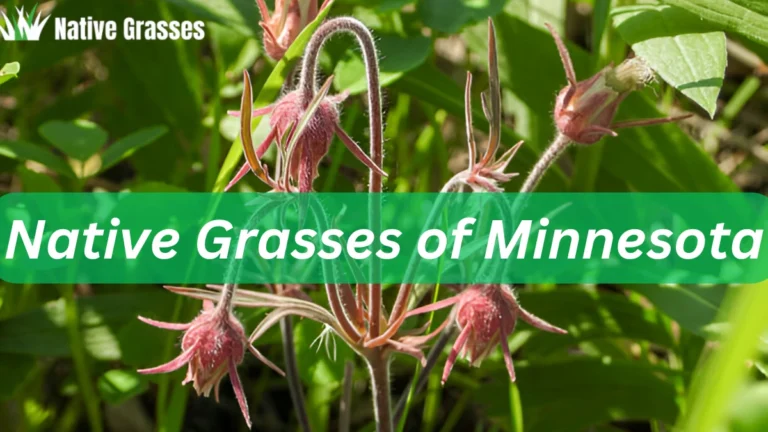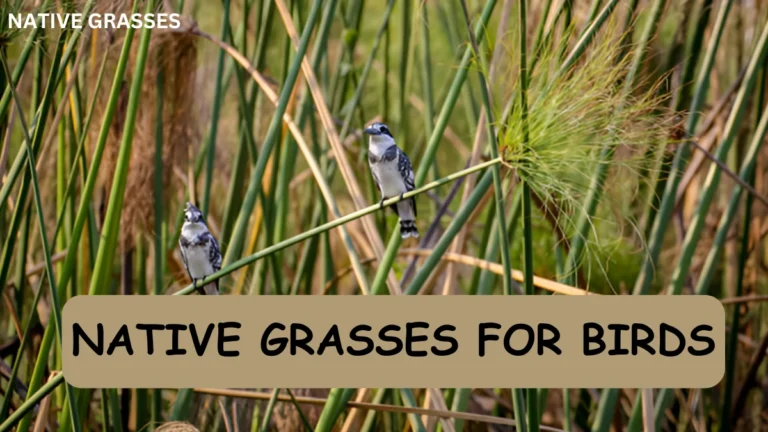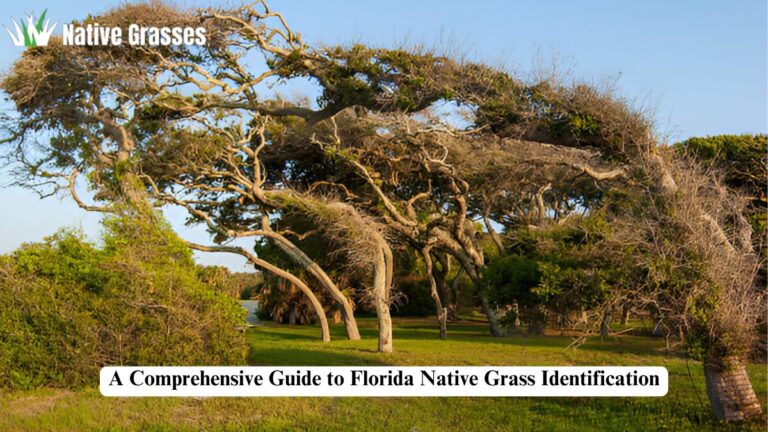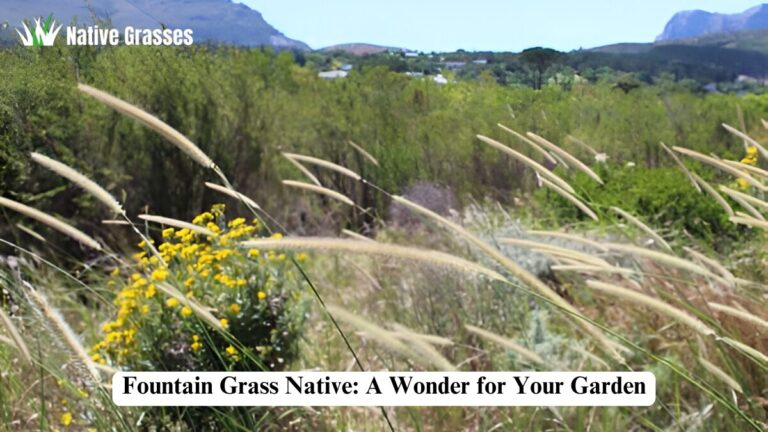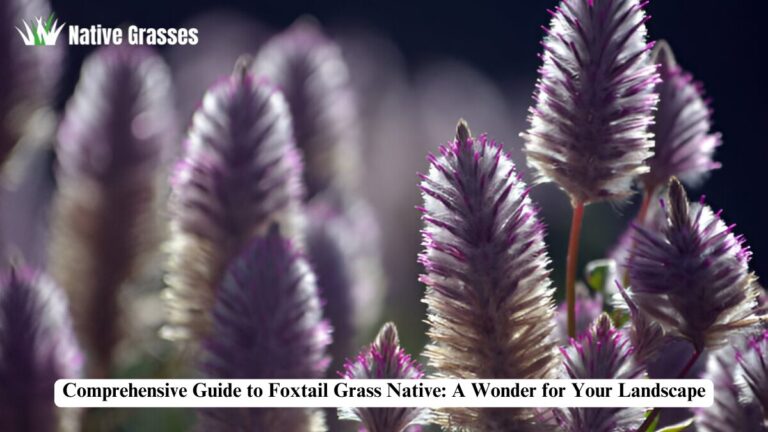Native Grasses of Wisconsin: A Comprehensive Guide to Their Importance and Conservation
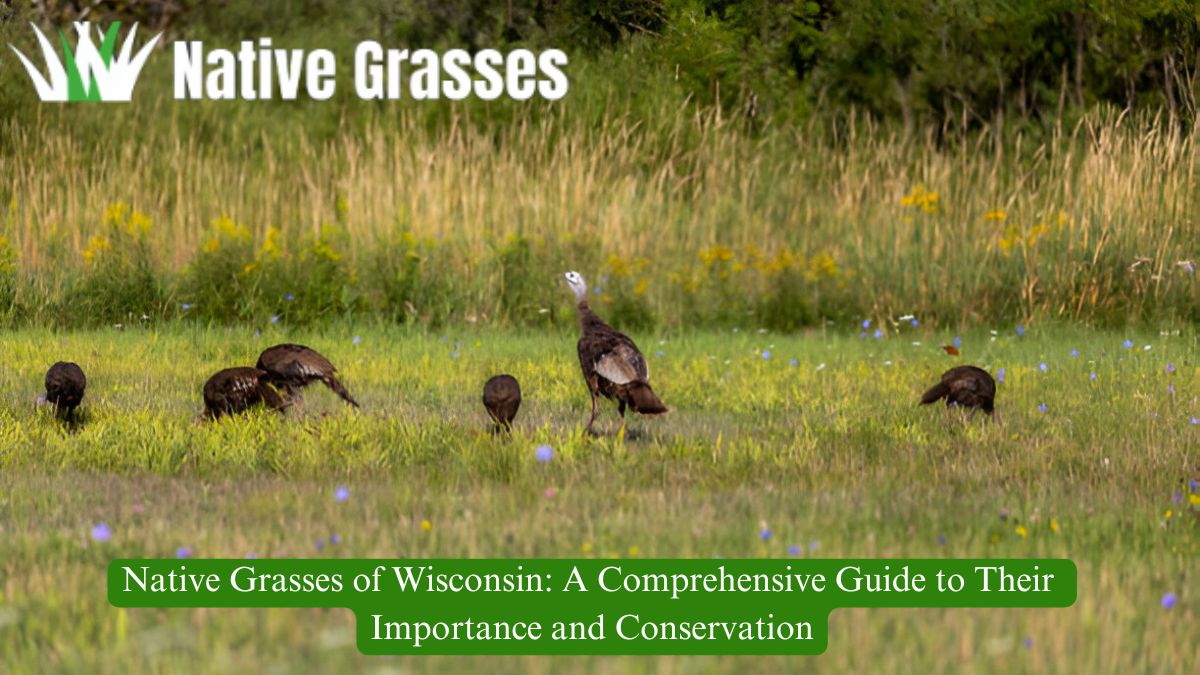
Wisconsin is home to a rich and diverse landscape, with vast prairies, wetlands, and forests that support a variety of wildlife. Among the key components of this ecosystem are native grasses—plants that have evolved to thrive in Wisconsin’s unique climate and soil conditions. In this guide, we’ll explore the significance of native grasses, the species that are native to Wisconsin, and how they contribute to the environment, economy, and biodiversity of the state. Whether you’re a landowner, conservationist, or simply interested in learning more, this post will provide a deep dive into the world of native grasses in Wisconsin.
Why Native Grasses Matter
Native grasses play a crucial role in maintaining the health of ecosystems across Wisconsin. Unlike non-native plants, which can disrupt local wildlife and soil health, native grasses are adapted to the region’s climate and conditions. Let’s look at why native grasses are so important:
Ecological Importance
- Soil Erosion Control: Native grasses, with their deep root systems, help anchor the soil and prevent erosion, particularly along riverbanks, hillsides, and other vulnerable areas.
- Water Filtration: Their roots also filter water, helping to keep local streams and rivers clean. This makes native grasses vital for maintaining water quality in Wisconsin’s numerous lakes and rivers.
- Habitat for Wildlife: These grasses provide food and shelter for many species, including birds, insects, and small mammals. They also create the perfect habitat for pollinators like bees and butterflies, which are essential for the local ecosystem.
Comparison to Invasive Species
Native grasses offer much more than aesthetic value. They contribute to a balanced ecosystem, while invasive species can harm the environment. For example, Reed Canary Grass (Phalaris arundinacea), a common invasive species, outcompetes native plants, reduces biodiversity, and disrupts local wildlife. Native grasses, on the other hand, are naturally suited to Wisconsin’s soil and climate, which allows them to thrive without overtaking other species.
Types of Native Grasses Found in Wisconsin
Wisconsin is home to a variety of native grasses, each with its unique characteristics and ecological contributions. These grasses can be broadly categorized into warm-season grasses and cool-season grasses. Below are some of the most common and important native grasses found in the state.
Warm-Season Grasses
These grasses thrive during the hot summer months and are often found in prairies, meadows, and open fields.
- Big Bluestem (Andropogon gerardii)
Known as the “king of the prairie,” Big Bluestem is tall and distinctive, growing up to 6 feet. Its dense root system helps stabilize the soil, and its seeds provide food for birds like sparrows and grouse. - Switchgrass (Panicum virgatum)
Switchgrass is a versatile grass found in prairies, wetlands, and even along roadsides. It is valued for its ability to improve soil health, prevent erosion, and provide habitat for wildlife. Additionally, it’s used in bioenergy production due to its high biomass yield. - Indian Grass (Sorghastrum nutans)
Indian Grass is an important grass for prairie restoration projects. It grows up to 5 feet tall and is known for its graceful, golden plumes. Indian Grass provides both shelter and food for wildlife, and its deep roots contribute to soil stability.
Cool-Season Grasses
Cool-season grasses are more active in spring and fall, and they grow best in cooler temperatures.
- Kentucky Bluegrass (Poa pratensis)
While often associated with lawns, Kentucky Bluegrass is also a native species in Wisconsin, especially in more temperate regions. It’s an essential part of many prairie ecosystems, offering food and shelter for a variety of animals. - Prairie Dropseed (Sporobolus heterolepis)
Prairie Dropseed is a fine-textured, grass-like plant that grows in clusters. It’s especially important for prairie restoration because of its tolerance for drought and its ability to thrive in poor soil. Its seeds are an important food source for birds.
Grass-like Plants
While not technically grasses, sedges (Carex species) are also an important part of Wisconsin’s natural flora. Sedges are commonly found in wetlands and offer unique benefits for wildlife, providing food and cover for aquatic species.
The Importance of Prairie Ecosystems in Wisconsin
Before the state was heavily developed for agriculture, Wisconsin was home to vast stretches of prairie. These prairies were rich in biodiversity, with native grasses like Big Bluestem and Indian Grass creating the foundation for entire ecosystems.
The Decline of Prairie Ecosystems
Due to urbanization, farming, and logging, Wisconsin’s prairies have drastically diminished. Less than 1% of the state’s original prairie land remains, with much of it being converted into agricultural fields or urban areas. This loss of habitat has had a profound impact on local wildlife, with many species, including the endangered Karner Blue Butterfly, now struggling to survive.
Restoration Efforts
Fortunately, there has been a concerted effort to restore prairie ecosystems across the state. Local conservation groups, landowners, and state agencies are working together to bring back native prairies by planting native grasses, implementing controlled burns, and promoting sustainable farming practices. These efforts help to restore natural habitats, improve biodiversity, and mitigate climate change.
Planting and Maintaining Native Grasses
Whether you’re looking to restore a prairie or simply want to add native grasses to your yard, planting and maintaining native grasses is a rewarding endeavor. Here’s how to get started.
Why Plant Native Grasses?
- Eco-friendly Landscaping: Native grasses require less water and fertilizer compared to non-native species, making them more sustainable and easier to maintain.
- Attract Wildlife: By planting native grasses, you’ll create a habitat for a wide range of wildlife, including pollinators, birds, and small mammals.
- Soil Health: Native grasses improve soil structure, making it more resistant to erosion and better able to retain water.
Best Practices for Planting Native Grasses
- Select the Right Species: Different native grasses are suited for different soil types and moisture levels. Be sure to choose grasses that will thrive in your specific environment.
- Soil Preparation: Prepare the soil by removing weeds and ensuring good drainage. Native grasses prefer well-drained soil, so it’s essential to amend heavy clay soils if necessary.
- Planting Time: The best time to plant native grasses is in early spring or late fall, depending on the species. Spring planting allows grasses to establish roots before the summer heat arrives.
Maintenance Tips
- Watering: Once established, native grasses are drought-tolerant and require little water. During the first year, however, regular watering may be necessary.
- Mowing: Some native grasses may need periodic mowing, especially during their first year. However, over-mowing can harm the plants. Always mow to a height of 4-6 inches.
- Control Weeds: Keep an eye out for invasive species like Reed Canary Grass, which can outcompete native plants. Manual weeding or the use of natural herbicides may be necessary.
Common Mistakes to Avoid
- Over-fertilization: Native grasses thrive in poor soil. Fertilizing too much can encourage the growth of weeds and non-native plants.
- Wrong Planting Time: Planting during extreme weather conditions, like summer heat or winter freezes, can damage or stunt grass growth.
Native Grasses and Climate Adaptability
One of the reasons native grasses are so crucial for Wisconsin’s environment is their adaptability to the state’s changing climate.
Drought Resistance
Native grasses like Switchgrass and Big Bluestem are particularly drought-resistant. Their deep roots allow them to access water deep in the soil, making them resilient in dry conditions. This adaptability is becoming increasingly important as climate change leads to more unpredictable and extreme weather patterns.
Flood Resistance
Wisconsin’s wetlands are prone to flooding, and native grasses play an essential role in managing excess water. Species like Prairie Dropseed are ideal for areas prone to wet conditions, as their root systems help absorb and hold water, reducing flood damage and preventing soil erosion.
Resilience to Changing Climate Patterns
As Wisconsin faces warmer temperatures and more frequent droughts, native grasses are likely to fare better than non-native species, which may struggle in the changing climate. Their ability to survive harsh conditions makes them a vital part of the state’s climate adaptation strategy.
Economic Benefits of Native Grasses
In addition to their environmental benefits, native grasses offer several economic advantages.
Agricultural Uses
Many native grasses, such as Switchgrass and Big Bluestem, are used in farming as forage for livestock. These grasses are well-suited to Wisconsin’s climate and can thrive in poor soil, reducing the need for expensive fertilizers and pesticides.
Bioenergy Production
Native grasses are also being used as biofuel crops. Their high biomass yield makes them ideal candidates for renewable energy production, contributing to Wisconsin’s growing green energy sector.
Ecotourism and Restoration
Restoration efforts in Wisconsin’s prairies have contributed to the state’s ecotourism industry. Prairie tours, bird watching, and nature walks attract visitors who want to experience Wisconsin’s natural beauty. The demand for native seed production has also created economic opportunities for local farmers and businesses.
Challenges Facing Native Grasses in Wisconsin
Despite the many benefits of native grasses, they face several challenges in Wisconsin, from habitat loss to the effects of climate change.
Invasive Species
Invasive plants like Reed Canary Grass and Canada Thistle threaten the health of native grasslands. These species grow quickly, crowding out native plants and reducing biodiversity.
Climate Change
Warmer temperatures and changing precipitation patterns could impact the distribution and health of native grasses. Some species may struggle to adapt to new environmental conditions, making conservation efforts even more critical.
Habitat Loss
Urban development, agricultural expansion, and land mismanagement have reduced the available habitat for native grasses. Restoring these grasslands requires significant effort and collaboration among local communities, conservation organizations, and government agencies.
Conservation and Restoration of Native Grasslands
There are many ongoing efforts to conserve and restore Wisconsin’s native grasslands. Through collaboration, education, and active restoration practices, these ecosystems can be brought back to life.
Ongoing Conservation Efforts
Local conservation organizations, such as The Prairie Enthusiasts, are working tirelessly to restore native prairies across the state. By planting native grasses, conducting controlled burns, and removing invasive species, they help to bring Wisconsin’s natural grasslands back to health.
Restoration Methods
- Controlled Burns: A technique used to rejuvenate prairie ecosystems by removing dead vegetation and encouraging the growth of new grass.
- Seeding: Planting native grasses and wildflowers in areas where the prairie has been lost.
- Grazing Management: Proper management of livestock grazing helps prevent overgrazing and allows native grasses to thrive.
Successful Case Studies
In southern Wisconsin, The Horicon Marsh has undergone successful restoration efforts. By reintroducing native grasses and using controlled burns, this once-degraded marshland is now a thriving ecosystem that supports a diverse range of wildlife.
How to Get Involved: Supporting Native Grass Conservation
Whether you’re a homeowner, farmer, or simply a nature enthusiast, there are many ways you can support the conservation of native grasses in Wisconsin.
Ways to Contribute
- Plant Native Grasses: Whether you have a small garden or a large farm, planting native grasses will help restore Wisconsin’s grasslands.
- Volunteer: Many local conservation organizations rely on volunteers for tasks like planting, weeding, and monitoring wildlife.
- Donate to Conservation Programs: Financial contributions can help fund restoration projects and education programs.
How Schools and Businesses Can Help
Schools can teach students about the importance of native grasses, while businesses can adopt sustainable landscaping practices by using native grasses in their corporate gardens and green spaces.
Conclusion
Native grasses are essential to the health of Wisconsin’s ecosystems. They provide valuable services, including erosion control, water filtration, and habitat for wildlife. Despite facing challenges such as invasive species and climate change, there are many efforts underway to protect and restore Wisconsin’s native grasslands. By getting involved and supporting these efforts, we can help ensure that future generations can enjoy the beauty and benefits of native grasses.
Call to Action
If you’re inspired to learn more about native grasses or contribute to their conservation, consider joining local volunteer programs, planting native species in your own yard, or donating to one of Wisconsin’s conservation organizations. Let’s work together to protect these vital ecosystems!
FAQ,s
What are the native grasses of Wisconsin?
Native grasses are plant species that have naturally grown in Wisconsin’s ecosystems for centuries without human intervention.
Why are native grasses important?
They support biodiversity, prevent soil erosion, and provide habitats for local wildlife.
How can I identify native grasses in Wisconsin?
Identification can be done by examining their growth habits, leaf structure, and seed heads, or using a field guide.
What are common native grass species in Wisconsin?
Some popular species include Big Bluestem, Indian Grass, Switchgrass, and Prairie Dropseed.
How can I help conserve native grasses in Wisconsin?
You can conserve them by planting native species, avoiding invasive plants, and supporting restoration projects.


